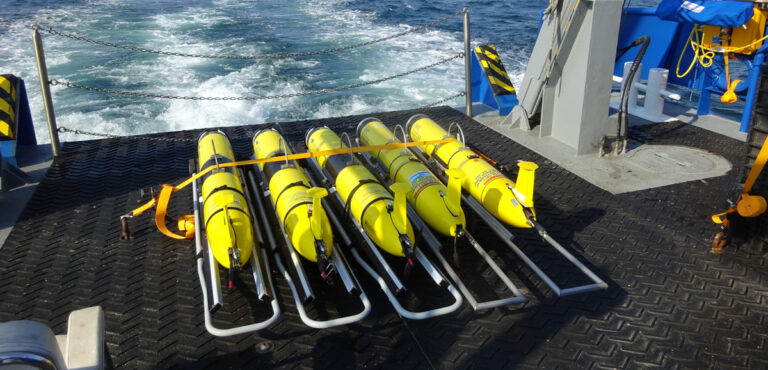Scientists from the US Naval Research Laboratory’s (NRL) Ocean Sciences Division are optimizing the use of ocean gliders and data to predict ocean conditions.
Researchers frequently use gliders to collect data on ocean conditions, but the vast area that the world’s oceans cover makes it tricky to place them effectively.
The current method is to place them far away from each other to maximize their limited spatial coverage.
Jeffrey Book PhD, an NRL oceanographer, said a single glider cannot tell the difference between a stationary, kilometers-long ocean feature and a traveling ocean feature that oscillates over several hours. A team of gliders can provide spatial context and potentially resolve this issue.
Placing gliders in teams required a change in piloting techniques, with researchers building on an existing automated piloting tool developed by NRL called Guidance for Heterogeneous Observation Systems, or GHOST.
GHOST can optimize single glider use with user-defined conditions such as areas to avoid, and it would provide reasonable paths under the restrictions.
Book and the team adjusted GHOST to employ glider teams by adding two rules that ensured that the gliders were not too close together for current models to use the data, or too far away to measure major ocean features.
Once GHOST was updated, the team had to find a location, and they decided on North Carolina.
Book said, “Because of the complicated ocean circulation in the area, it’s an interesting place to test our ability to observe and predict the ocean environment. The warm transportation of tropical water northeastward along the continental shelf break by the Gulf Stream current creates some complex structures.”
For 18 days off the coast of North Carolina, NRL researchers tested six gliders in different team configurations near the Gulf Stream, with the team having to change how data was gathered.
“There was some benefit to just improving the assimilation method for the models, but this benefit was greatly increased if we used glider teams instead of single gliders. What we saw overall was that it is important to do both,” Book said.
An improvement of 9-12% in the accuracy of ocean weather models was observed by Book and his team.



